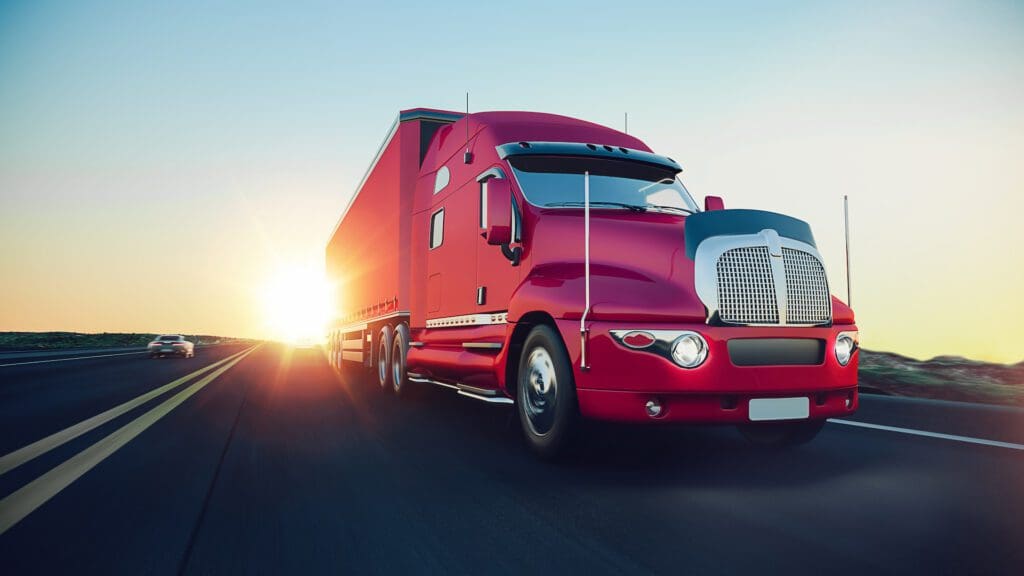If you like to talk about trucks, Classes 3, 4 and 5 make up one of the more interesting and active segments in the market. At the lower end, sales have been boosted in recent years by consumers who want bigger, more powerful pickups, whether or not they actually need them. At the upper end, models are true medium-duty products with serious size and load-carrying capacities. Throughout, competition is livened by the presence of new low cab forward offerings and a new Eurovan-style cab-and-chassis product, which give commercial buyers additional choice and shipping capabilities.
Nameplates on Class 3 to 5 conventional-cab trucks are Ford, Chevrolet/GMC, Dodge, and now Hino. Freightliner and Sterling have models that can be equipped for gross-vehicle-weight ratings as low as 18,000 pounds, but few if any are actually built that way.
Among all LCFs (low cab forward trucks), roughly eight out of 10 are sold by the General Motors-Isuzu alliance, while three other companies – Hino, Mitsubishi Fuso and Nissan Diesel – have scrapped over what’s left. Primary target among LCF competitors is the Big Gorilla, GM and Isuzu. But they and the other Japanese importers say they’re not concerned, noting that their products have proven to be durable and long-lasting, and customers have grown loyal because of that.
International says it’s jumping into the LCF fray because some of its customers have asked for a domestic-style cabover. And CF sales will help the company meet top management’s goal of expanding annual sales to $15 billion, almost double that of now. International’s 1,000 sales and service outlets in the U.S., Canada and Mexico should give it an advantage over the importers. Ford’s version will get the company back into certain specialty sales it lost when it sold the Cargo to Freightliner in ’97, along with the HN80 heavies.
One curiosity of the International CF is its model numbering versus its weight ratings. The CF-500 is a Class 4 truck, so why not call it the 400? And the CF-600 is a Class 5, so why isn’t it the 500? Executives laughed at the question because they had apparently argued over it themselves. They decided to use higher numbers to keep the lower ones clear for future lighter-duty versions of the truck. Ford will sidestep any such issues by calling its versions simply “LCF,” with no numbers.
That New Diesel V-6
The CF/LCF is the first use of International’s new 4.5-liter V-6 diesel, which is based on the 6-liter V-8. The Six has a curiosity of its own: double turbocharging. Space constraints prevented use of an EVERT variable-geometry turbo, engineers explained, so two smaller waste-gated turbos are used instead. These are in series, with a high-pressure turbo just ahead of a low-pressure unit, and essentially do the same work of the bigger, more complex and pricier EVERT type. Two simple turbos cost perhaps half of one EVERT, which lowers the truck’s price – and it will sell into a very price-sensitive market. The owner will save money, too, if he ever has to replace one or even both the relatively inexpensive turbos.
International is seeking other uses for the VT-275, as the V-6 is called. Executives say that they might bring out Class 4 or 5 conventionals powered with it, and Ford says it’s still looking at using the diesel V-6 in light-duty trucks and SUVs, especially if currently spiking gasoline prices persist. International has also gotten the U.S. Army interested in using the engine to repower old “Humvee” utility trucks, which began production in the mid ’80s with GM’s 6.2-liter diesel V-8. The new V-6 is lighter, more powerful and easier on fuel than the old V-8, and the V-6 would breathe new life into the Humvee chassis.
Dealing With Emissions
Light- and medium-duty diesels from all domestic builders comply with 2004 emissions regulations through use of exhaust-gas recirculation, high-pressure fuel injection, advanced electronics and improvements to combustion chambers. Among the import diesels, Hino’s and Isuzu’s were upgraded by the January ’04 deadline, but Mitsubishi Fuso and Nissan Diesel built enough ’03-spec engines and trucks to satisfy sales for the first six or so months of this year. This summer, the two builders will switch to new product lines with fully compliant diesels.
A third type of truck, the European-style Sprinter from DaimlerChrysler Vans, is catching on among package delivery fleets and tradesmen. New from Sprinter is a cab-chassis version that can take specialty bodies, from vans to small dumps to cabinet-equipped utility units. Freightliner and Dodge dealers sell them, but the Freightliner outlets with a Sprinter franchise will lose it in ’06, according to present plans.
Still another type of Class 3 to 5 truck is the stripped chassis, produced by Freightliner Custom Chassis, International and Workhorse. We covered those, as well as the panel-type cargo vans, in a previous issue. And while we talked about the new International/Ford LCF, we don’t list it in the product roundup because it’s not yet available.
Classes By Weight
Gross vehicle weight ratings of this article’s subject vehicles:
- Class 3 – 10,0001-14,000 lbs.
- Class 4 – 14,0001-16,000 lbs.
- Class 5 – 16,0001-19,500 lbs.
Dodge
The Class 3 Ram 3500 is increasingly popular with consumers, but is also “Job-Rated” (a marketing term from the ’50s) for commercial work. The 3500 comes as a pickup or “box-off” cab-chassis, with 5.7-liter Magnum Hemi gasoline V-8 mated to a 5-speed manual or 4-speed automatic transmission, or the inline-6 Cummins “600” Turbodiesel, which has just been boosted to 600 pounds-feet of torque (from 555), and can be had with a 6-speed manual or a new 5-speed automatic. Cabs come in 2-door Regular or 4-door Quad, and rear axles can be had with single- or dual-wheel ends
Sprinter
Certain Freightliner and Dodge dealers sell the Sprinter 2500 and 3500 Eurovan, and now have a cab-chassis Sprinter version for the mounting of specialty bodies. Frame rails are clean-topped and include special pads for body mounting; the top of the fuel tank’s filler neck is behind a small access door in the cab’s B pillar, so it does not have to be rerouted or resecured by the body installer. Air bags are standard, as is an Electronic Stability Program, which uses accelerameter sensors to identify a pending roll, then applies brakes and cuts engine power to avoid it. All Sprinters have a Mercedes 2.7-liter turbodiesel and 5-speed automatic, which claim fuel economy of up to 27 mpg.
Ford
Fancy Super Duty F-350s are often bought by consumers, but work-oriented F350s more resemble the F-450 and F-550, which are handled by Ford Commercial Trucks. All Super Duties use 2-door Regular or 4-door Super and Crew cabs; engines include a standard Triton gasoline 5.4 V-8 and optional 6.8 V-10, and the optional 6.0 PowerStroke diesel V-8. Chassis are built to handle various weight ratings, and frames are designed for easy body mounting. All 2x4s use the venerable twin I-beam front axle design. A Super Duty E-450 cab-chassis, using the Econoline-style short nose and cab, is also available.
General Motors
The Chevrolet and GMC 3500 is a heavy pickup chassis, with Regular, Extended and Crew cabs from the light-duty 1500 and 2500, and appropriately beefed-up frames, suspensions and wheels; the Vortec 6000 gasoline V-8 is standard and the Duramax 6600 V-8 diesel is optional. The C4500 and C5500 conventionals are at the lower end of GM’s medium-duty model lineup, with the van-based cab (in 2-door Regular and 4-door Crew) and big 8100 gasoline V-8 as standard, and the Duramax V-8 diesel optional.
GM Isuzu
Isuzu supplies complete diesel-powered low cab forward Class 3 to 5 trucks from Japan, while General Motors assembles gasoline-powered LCFs here. Chevy and GMC-badged versions are the W3500, W4500 and W5500, and Isuzu calls them the NPR, NPR HD (heavy duty) and NQR. Gasoline power for the Class 3 and 4 models is GM’s Vortec 6000 V-8, while the diesel is Isuzu’s 4HC1-TC in-line 4. The W5500/NQR has only the 4-cylinder diesel. Four-door Crew Cabs are offered in the Class 4 and 5 trucks.
Hino
Importing and sales of Hino’s new domestic-style conventionals has begun. Class 3 to 5 offerings are the 145, 165 and 185, all with a J-series 5-liter inline-4 diesel and cab made in Japan; virtually all driveline and chassis components are bought in North America. Meanwhile, FA and FB LCF models are still available, and with emissions reg-compliant EGRed diesels, but will phased out as the new conventionals phase in. An expanded dealer network will offer trucks and other trucking-related products.
Mitsubishi Fuso
Nine models in Classes 3, 4 and 5 include FE, FG and FH series, some with alpha and numerical suffixes denoting special equipment and payload capacities The FG comes in a 4×4 version, and the FE is available with a 4-door Crew Cab. All are carryovers from ’03, and all use non-EGR 4-cylinder diesels built prior to Jan. 1. By summer, an entirely new series of trucks will begin coming in with new EGRed diesels, new cabs and other features.
Nissan UD
UD (for Uniflow Diesel) trucks include five Class 3 to 5 models: 1200, 1400, 1800CS and 1800HD, with FE46TA 4-cylinder diesels, and 2000, with the 6-cylinder FE6TA. All models are carried over from last year with non-EGRed engines built before Jan. 1. This summer, this weight range will get a new EGRed diesel and one new model. Hino will supply engines built to Mitsubishi’s specs – another example of industry “rationalization” forced by ever-tightening emissions rules.




